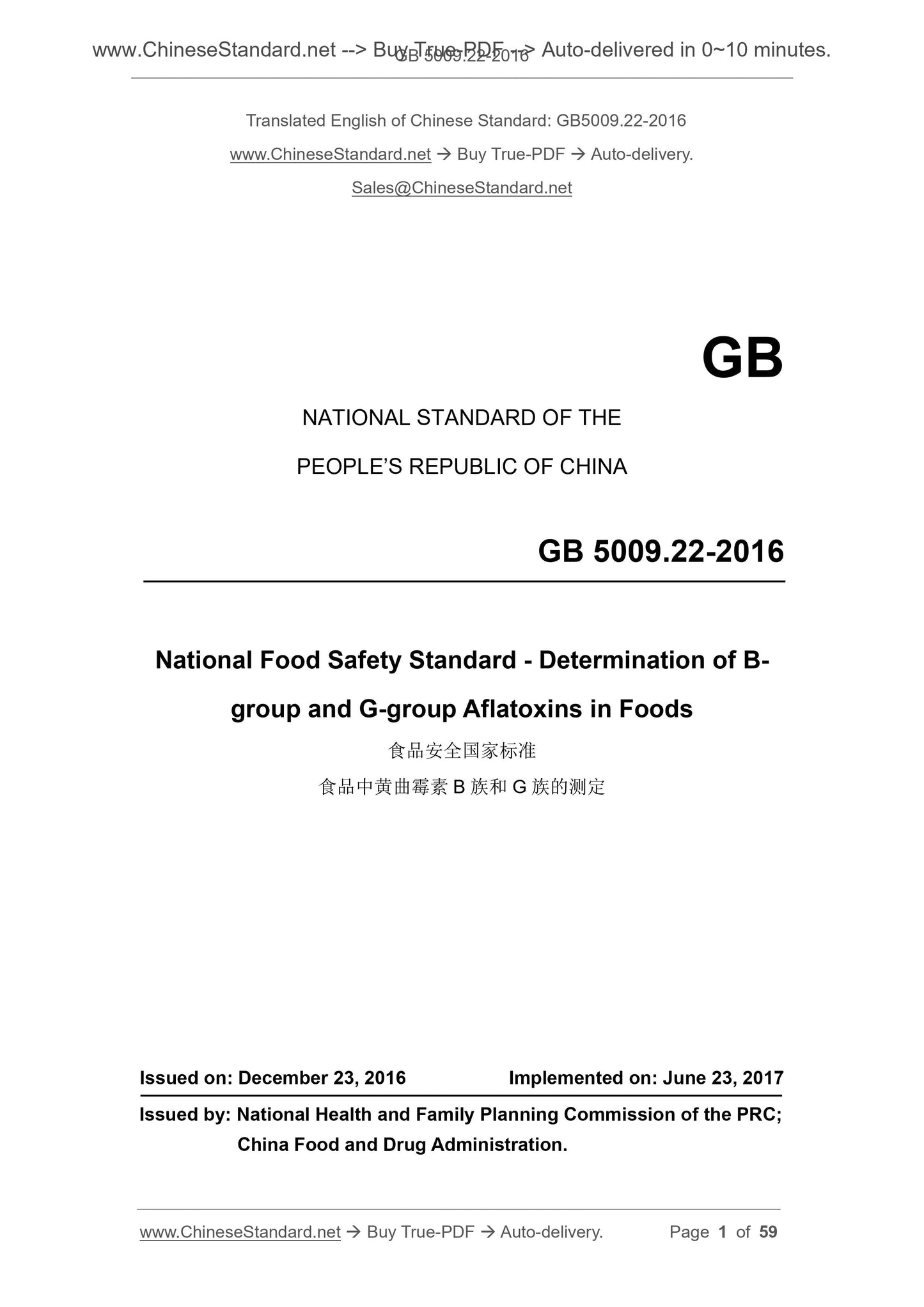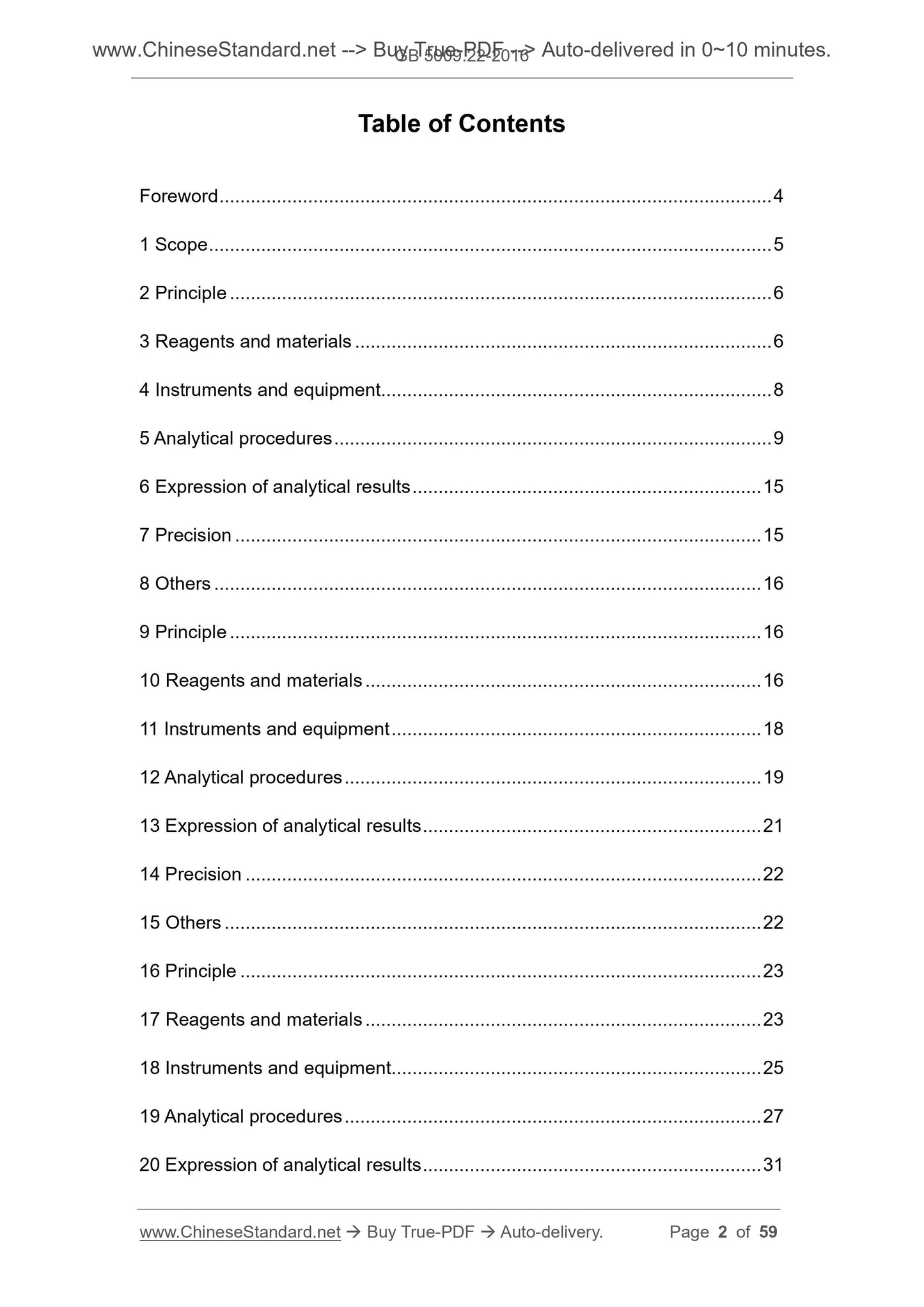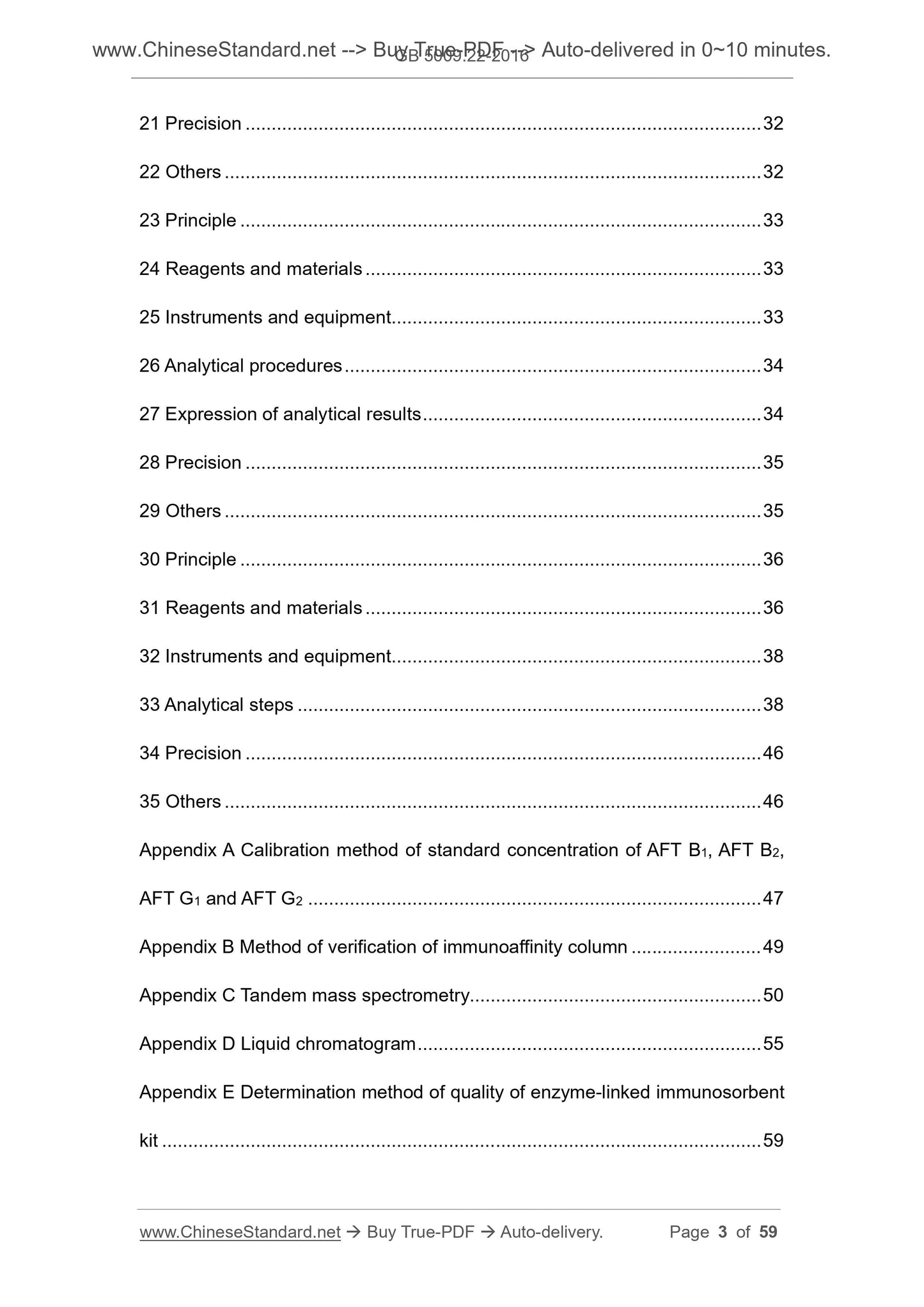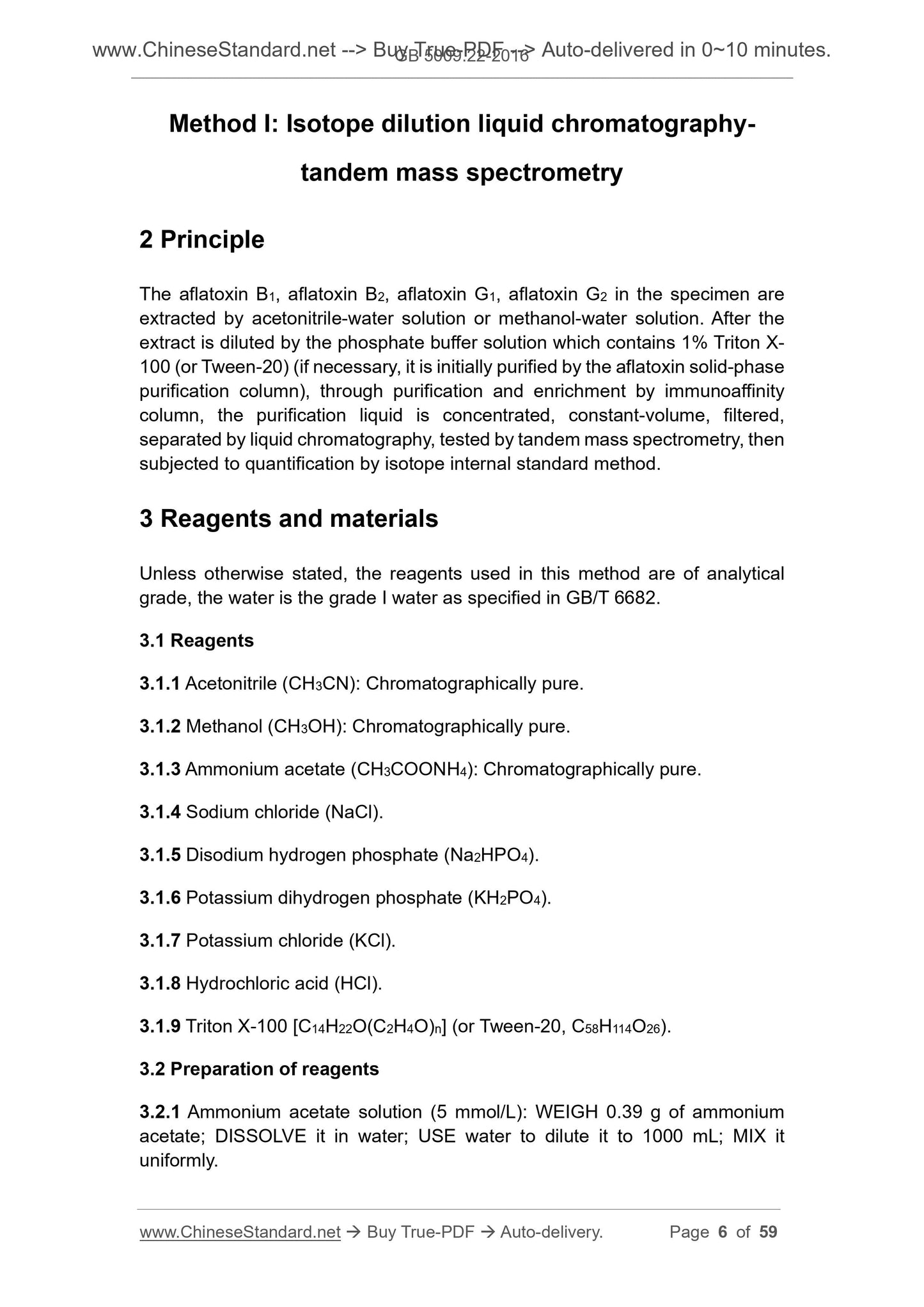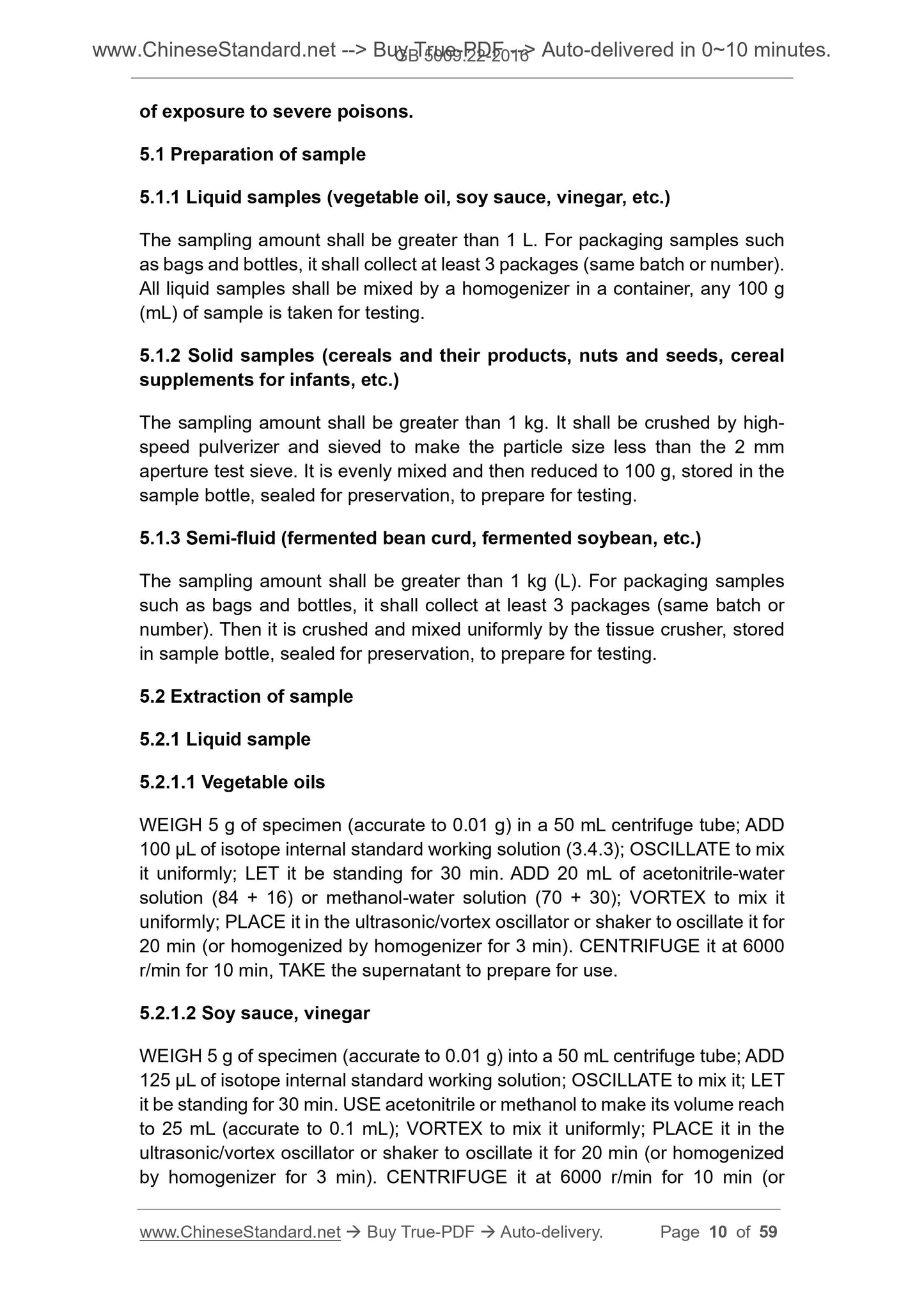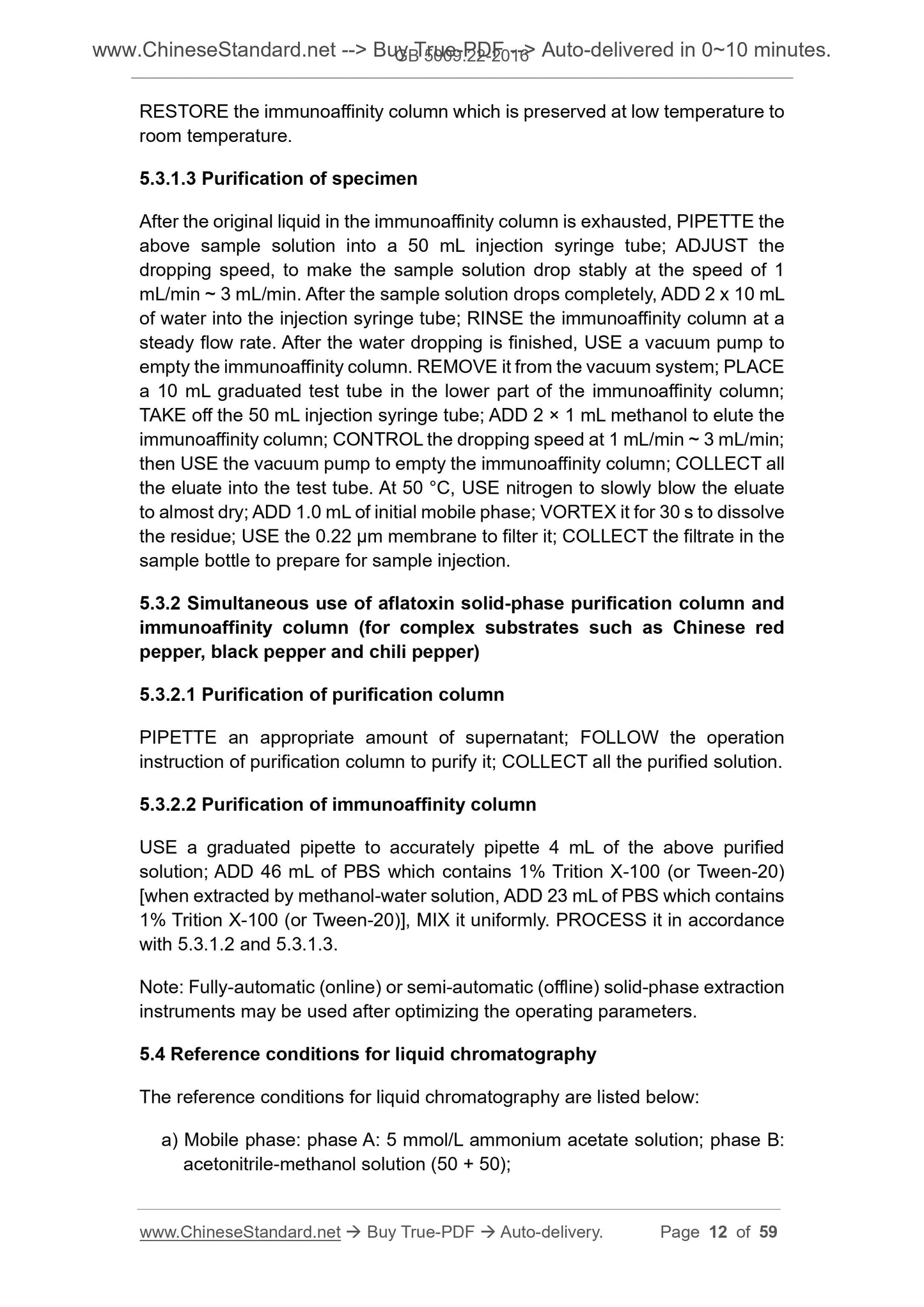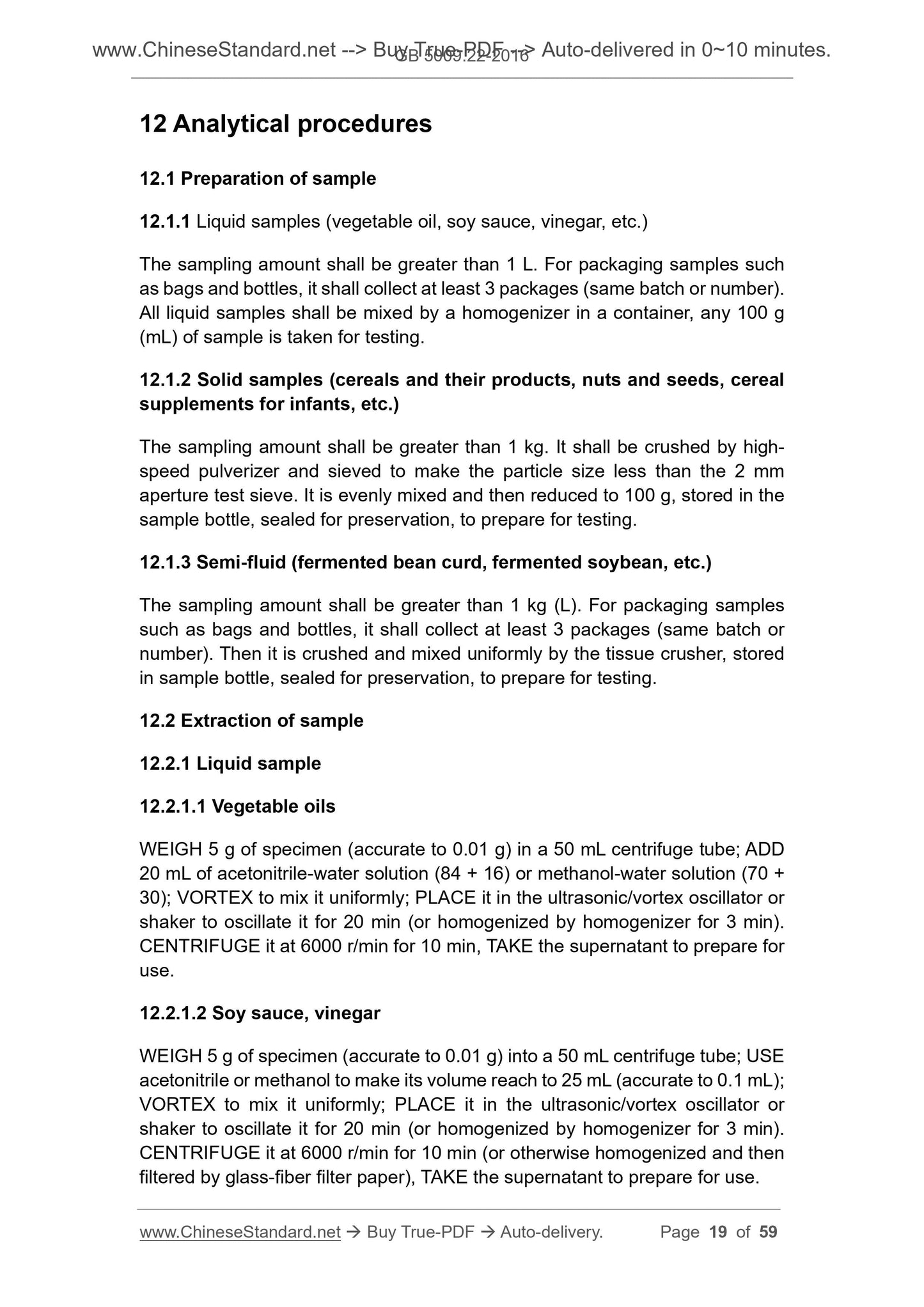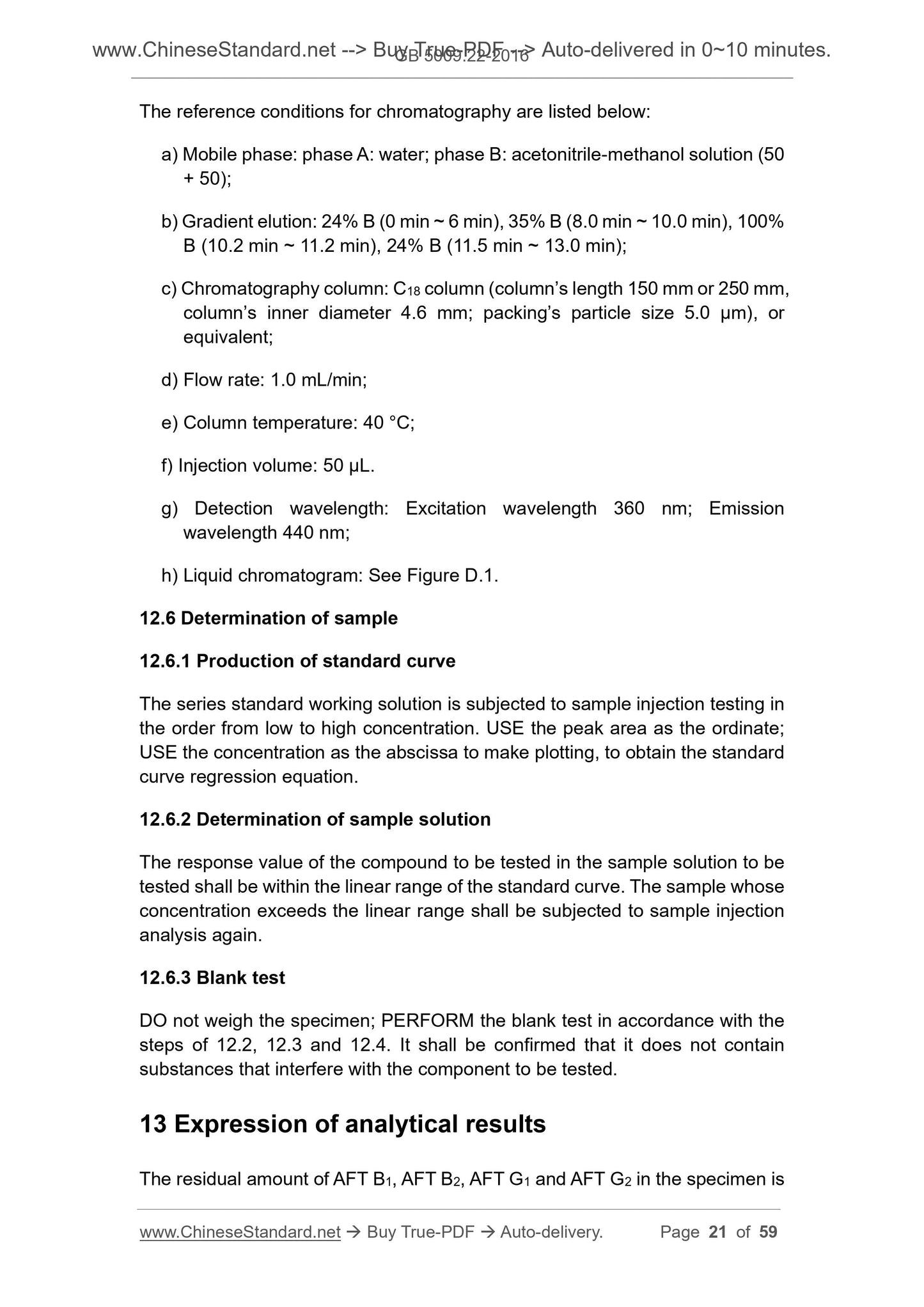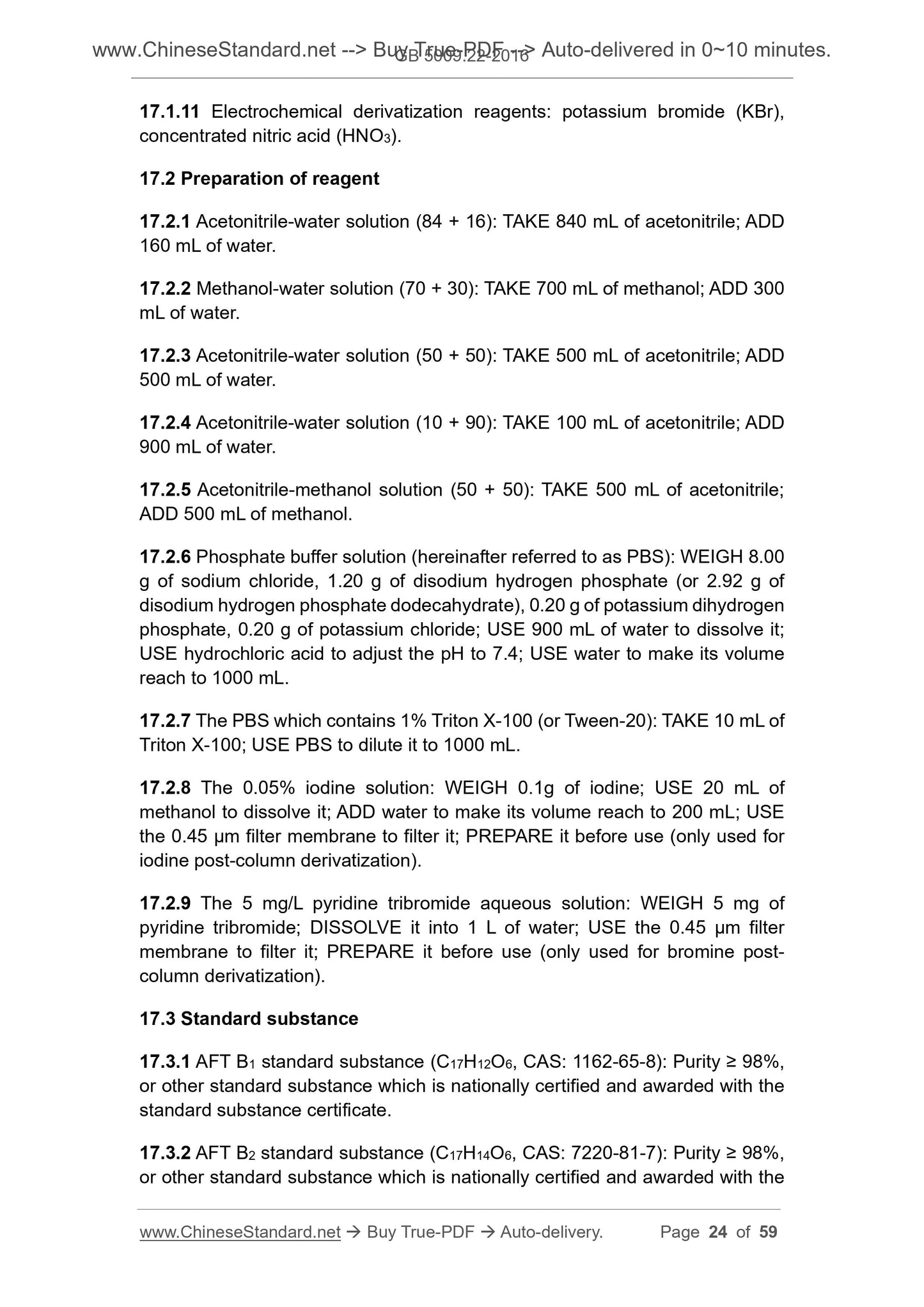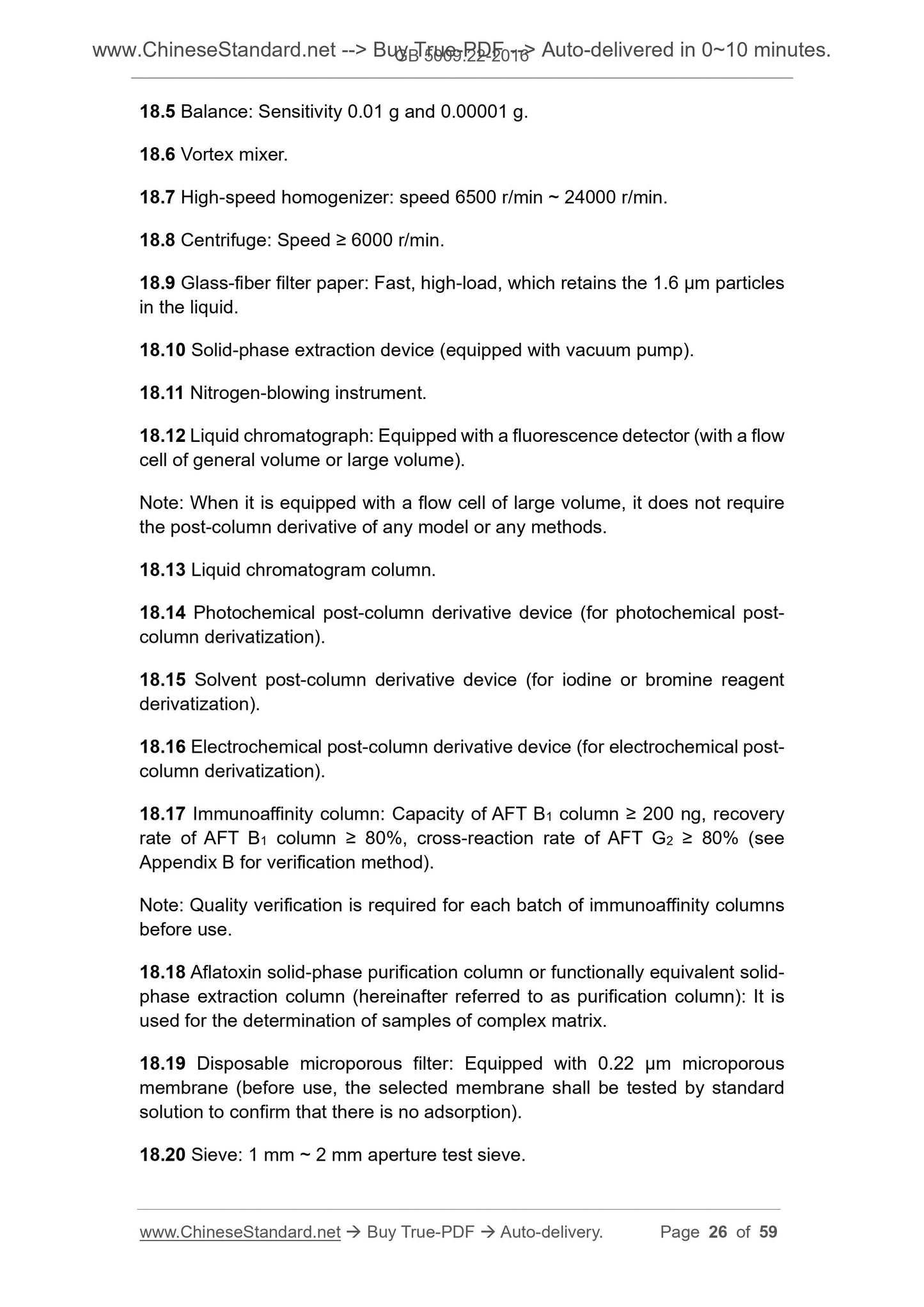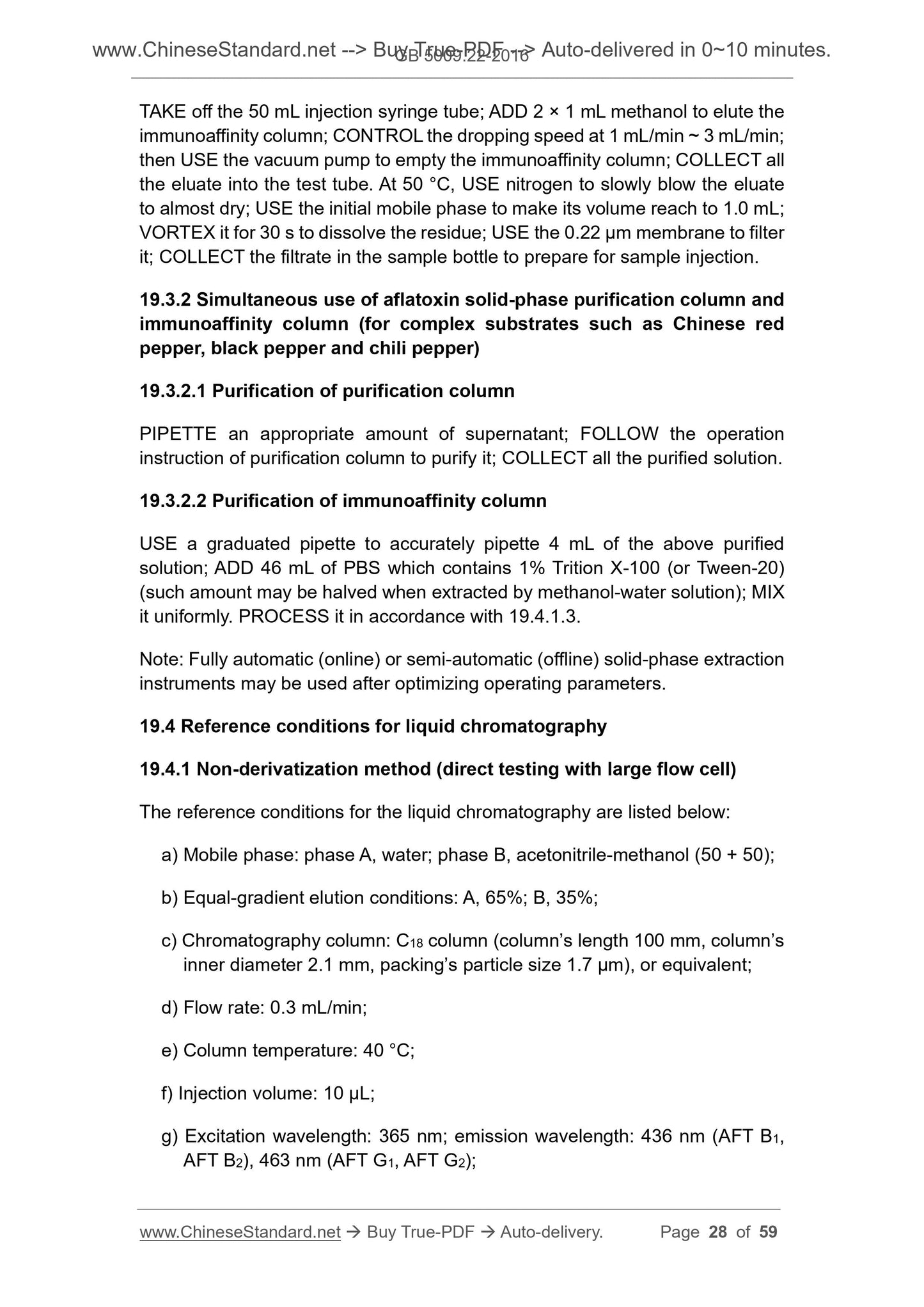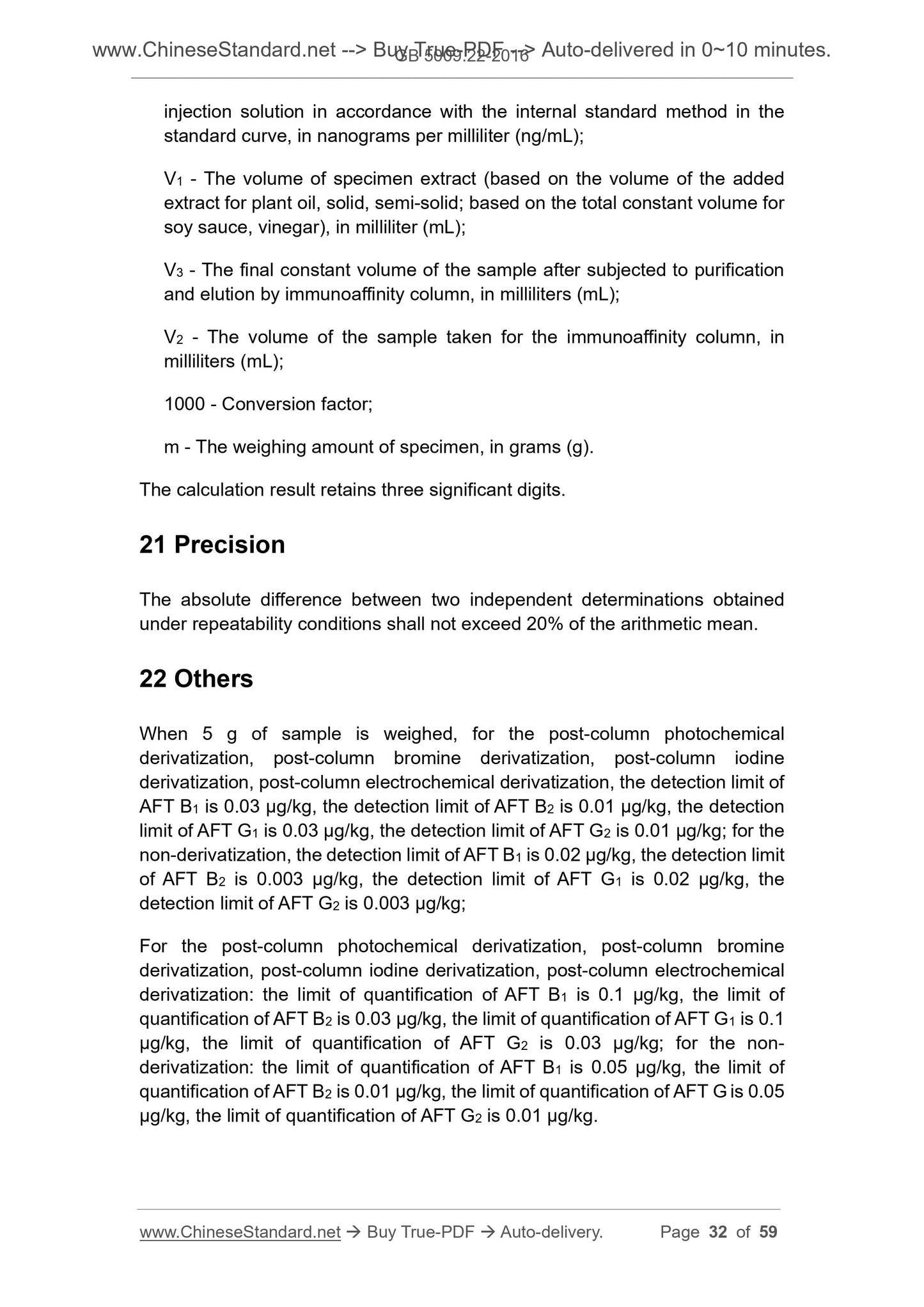1
/
of
12
www.ChineseStandard.us -- Field Test Asia Pte. Ltd.
GB 5009.22-2016 English PDF
GB 5009.22-2016 English PDF
Regular price
$245.00
Regular price
Sale price
$245.00
Unit price
/
per
Shipping calculated at checkout.
Couldn't load pickup availability
GB 5009.22-2016: National food safety standard - B-group and G-group aflatoxins in foods
Delivery: 9 seconds. Download (and Email) true-PDF + Invoice.Get Quotation: Click GB 5009.22-2016 (Self-service in 1-minute)
Newer / historical versions: GB 5009.22-2016
Preview True-PDF
Scope
This standard specifies the method for determination of aflatoxin B1, aflatoxinB2, aflatoxin G1, aflatoxin G2 (hereinafter referred to as AFT B1, AFT B2, AFT G1
and AFT G2) in food.
The first method of this standard is the isotope dilution liquid chromatography-
tandem mass spectrometry, which is suitable for the determination of AFT B1,
AFT B2, AFT G1 and AFT G2 in cereals and their products, beans and their
products, nuts and seeds, fats and their products, seasonings, infant formula
and infant complementary foods.
The second method of this standard is the high-performance liquid
chromatography-pre-column derivatization, which is suitable for the
determination of AFT B1, AFT B2, AFT G1 and AFT G2 in cereals and their
products, beans and their products, nuts and seeds, fats and their products,
seasonings, infant formula and infant complementary foods.
The third method of this standard is the high-performance liquid
chromatography-post-column derivatization, which is suitable for the
determination of AFT B1, AFT B2, AFT G1 and AFT G2 in cereals and their
products, beans and their products, nuts and seeds, fats and their products,
seasonings, infant formula and infant complementary foods.
The fourth method of this standard is the enzyme-linked immunoadsorption
screening method, which is suitable for the determination of AFT B1 in cereals
and their products, beans and their products, nuts and seeds, fats and their
products, seasonings, infant formula and infant complementary foods.
The fifth method of this standard is the thin-layer chromatography, which is
suitable for the determination of AFT B1 in cereals and their products, beans
and their products, nuts and seeds, fats and their products, and seasonings.
Method I. Isotope dilution liquid chromatography-
tandem mass spectrometry
Basic Data
| Standard ID | GB 5009.22-2016 (GB5009.22-2016) |
| Description (Translated English) | National food safety standard - B-group and G-group aflatoxins in foods |
| Sector / Industry | National Standard |
| Classification of Chinese Standard | X04 |
| Classification of International Standard | 67.050 |
| Word Count Estimation | 37,386 |
| Date of Issue | 2016-12-23 |
| Date of Implementation | 2017-06-23 |
| Older Standard (superseded by this standard) | GB 5009.24-2010 Partial; GB/T 18979-2003; GB/T 23212-2008 Partial; GB/T 5009.22-2003; GB/T 5009.23-2006; NY/T 1286-2007; SN 0339-1995; SN/T 1101-2002; SN/T 1664-2005 Partial; SN/T 1736-2006 |
| Regulation (derived from) | National Health and Family Planning Commission Notice No.17 of 2016 |
| Issuing agency(ies) | National Health and Family Planning Commission of the People's Republic of China, State Food and Drug Administration |
| Summary | This standard specifies the determination method for aflatoxin B1, aflatoxin B2, aflatoxin G1, aflatoxin G2 (hereinafter referred to as AFT B1, AFT B2, AFT G1 and AFT G2) in food. The first method of this standard is isotope dilution liquid chromatography-tandem mass spectrometry for cereals and their products, beans and their products, nuts and seeds, oils and fats and their products, condiments, infant formula and infants and young children Determination of AFT B1, AFT B2, AFT G1 and AFT G2 in Food. The second method of this standard is a high performance liquid chromatography pre-column derivatization method for cereals and their products, legumes and their products, nuts and seeds, oils and fats and their products, condiments, infant formula and infants and young children Food |
Share
